UNIFORM SUCCESS
By
4 years ago
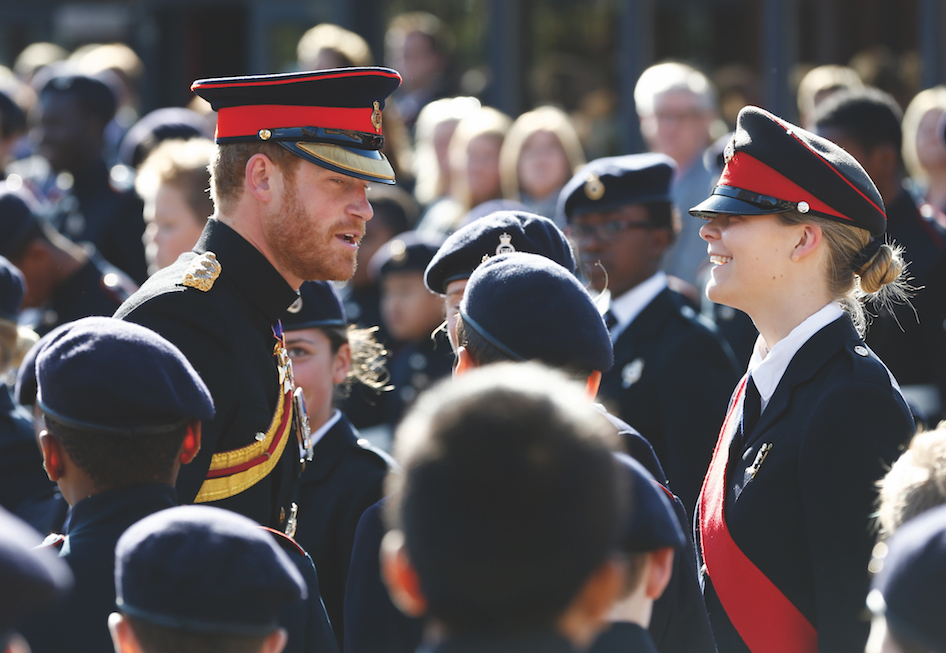
Schools with old military links have found a new USP, and it’s working, says Eleanor Doughty

Once upon a time, Britain’s public schools were suffused with military links. Soldiers and sailors had to be created – not to mention educated – somewhere. The 19th century was the making of such schools. Wellington College opened in 1859 to educate sons of fallen army officers, and for a long time had a reputation for being, as one journalist put it, ‘a holding house for Sandhurst cadets’. As the late military historian Sir Michael Howard writes in the introduction to Anthony Seldon and David Walsh’s 2013 book, Public Schools and the Great War, during his time at Wellington, ‘we could not escape the sad memorials with their message that we in our turn must be prepared to follow the example of our predecessors and make our own sacrifice.’ For, during the First World War, some 35,000 old boys of public schools were killed. Hundreds of gallantry medals were given to these boys – 13 Victoria Crosses from Eton, nine from Harrow, and six from Haileybury alone.
It is little surprise, then, that most household-name boarding schools today can claim some link to the armed forces. Today, the relationships these schools have with the military are respected, but not the focus. After all, a £40,000-a-year school must offer more than proficiency in cleaning boots. And the military itself is much diminished; there are only a third more full-time soldiers in the British Army than died on the first day of the Battle of the Somme in 1916. Public schools are no longer deemed essential for equipping the Ministry of Defence with suitable personnel – though you wouldn’t think so from certain regimental dinners. Haileybury – which merged with the former United Services College in 1942 – is now fully co-ed, and Wellington went the same way in 2006. So what is the purpose of a school today with military links?
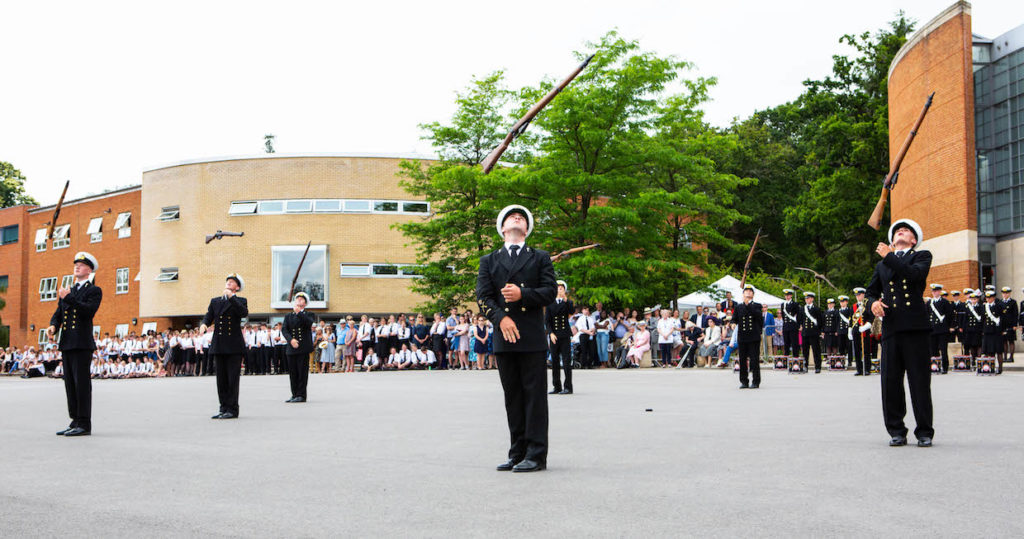
Some schools remain closer than others to their military foundations. Pangbourne College in Berkshire is one such. Founded in 1917 as the Nautical College, Pangbourne, to prepare boys for the Merchant Navy, it now bears a resemblance to most other boarding schools. Boys and girls enter at 11 and are taught the full roster of academic subjects. There’s a school farm, where hens lay eggs and pupils can make jam, and students in the upper-sixth can join the Wine Society. Pupils can take both BTECs and A-levels, and the classics department regularly goes on tour. A few traditions remain however; pupils wear naval uniforms, eat in the ‘mess hall’, call their boarding houses ‘divisions’, and each day the school’s blue ensign is flown. The head, Thomas Garnier, served in the Royal Navy, and the bursar, Neil Walne, is a former officer in the Royal Engineers.
Pangbourne is not alone in retaining a few military links. The Royal Hospital School (RHS) was founded in 1712 to provide education to orphans of seafarers. Originally located at Greenwich Hospital, in what is now the National Maritime Museum, in 1933 it moved to its Suffolk campus. Education at RHS focused on maritime matters as late as the 1950s, but today, its headmaster, Simon Lockyer, impresses the importance of the school’s civilian status. ‘We are not a military school in any shape or form. We have no responsibility to the armed forces, and we don’t have a quota on pupils having to go into the Army, Navy, or RAF,’ he says. Still, pupils refer to lunch as ‘mess’, and the school’s defaced blue ensign is raised and lowered daily by a group of pupils, a tradition dating back to the school’s foundation. Girls and boys can board from 11, and the curriculum offers a run of BTECs alongside A-levels. Lower-sixth pupils can qualify to become sailing instructors, while vocational awards can be sought in IT. And amongst the usual seasonal sports of hockey, rugby, and cricket, pupils learn to windsurf, keep horses at livery and climb on the school’s own indoor climbing wall.
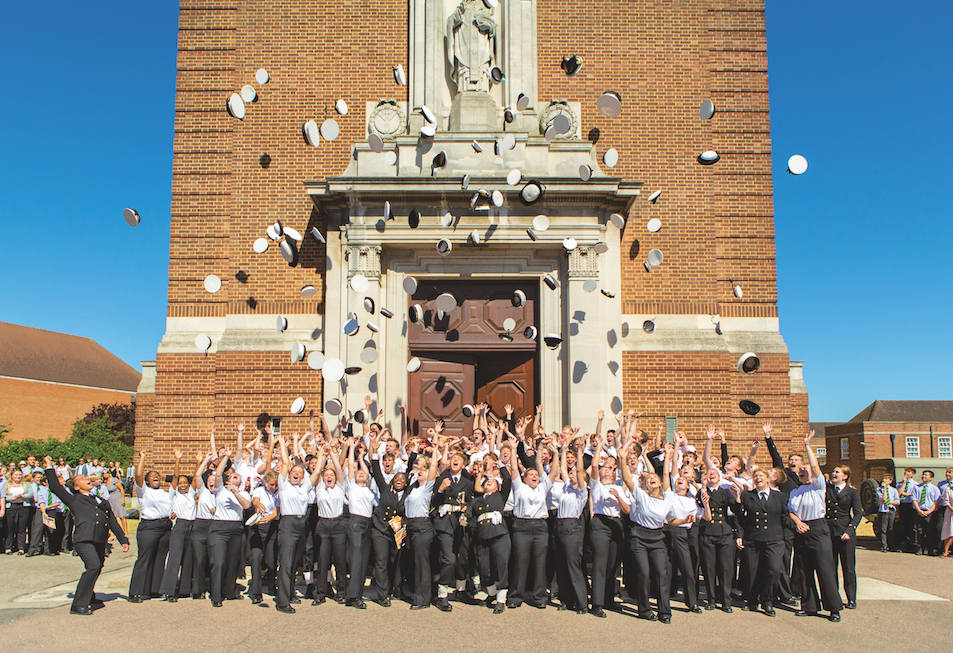
An objective observer might point out that both Pangbourne and RHS are conventional boarding schools – just with a little military cherry on top. But in a competitive market, they have to have a USP, and drill is theirs. At RHS, while pupils wear school uniform, they don naval uniform for the division ceremonies that happen seven times a year. ‘It’s the same as you would see at the Britannia Royal Naval College in Dartmouth; a naval parade accompanied by the school’s marching band,’ says Lockyer. ‘It takes about 45 minutes and is overseen by an inspecting officer from one of the Armed Forces.’At Pangbourne, parade practice is on Thursdays, and is a way of ‘building teamwork, like being in a choir or a sports team,’ says Walne. This appeals to both boys and girls, he adds. ‘My daughter hasn’t got a military bone in her body, yet enjoys marching. To stand on parade in front of people challenges them. We use a lot of the techniques that the military use to turn people out.’
Of course, one could say that of boarding school life in general. And these are not the only schools that retain links, to one extent or another, with the military. As cosy as it is today, Wellington’s school houses are named after military commanders (Wellesley, Picton, Combermere, and more), and pupils participate in the Field Gun Run, which has its origins in the Royal Navy, asking teams of sailors to transport a field gun through a series of obstacles – even the Navy discontinued it in 1999. Time was when the prospectus for Cheltenham College – founded in 1841 and from which 702 former pupils were killed in the First World War – noted that ‘all boys in the senior school are instructed in military drill and the use of the rifle’. Today, it is a thoroughly modern independent school, fully co-educational with pottery, polo and climbing on its list of activities, as well as a mini-MBA elective.
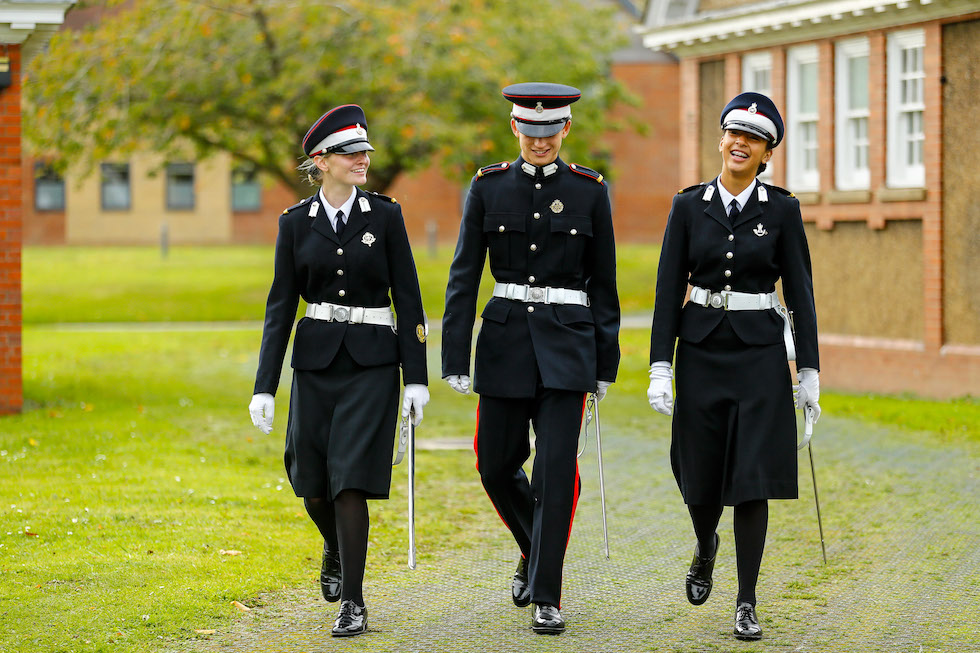
It is not just in the independent sector that military links remain. The Duke of York’s Royal Military School (DOYRMS) in Kent, a Ministry of Defence-sponsored academy where boarding fees are £14,445 a year (for civilian families), was founded in 1903 as the Royal Military Asylum to educate orphans of British servicemen killed during the Napoleonic Wars. Until 1999 the school’s headmasters were serving military officers, and only in 2011 were children from civilian families able to enrol.
In the busy Kent secondary school market – there are 34 grammar schools, as well as a handful of independent boarding schools – DOYRMS’s USP is definitely its military ethos. ‘Our values are courage, integrity, respect, commitment, loyalty, and self-discipline,’ says a spokesperson. The school, which has 500 on roll, is proudly regimented in its outlook. ‘You have to have good behaviour to get in here. You will not see children walking around with phones.’
While this might appeal to screen-time conscious parents, there is more to school life than that – trips to CERN are offered, alongside kickboxing, riding, and competitive trampolining. A bit of marching does make it onto the timetable. Each year pupils have their own version of the Trooping of the Colour, called Grand Day, an inter-house drill competition, the winner of which presents the school colours.
It is a unique environment, says Lieutenant-General Sir Gary Coward, chairman of armed forces charity SSAFA (Soldiers, Sailors, Airmen and Families Association), who attended DOYRMS and went straight to Sandhurst upon leaving. ‘There were six in my year that went to Sandhurst and we had a head start,’ he says. ‘It wasn’t as much of a drama for us as it would have been for the majority of cadets.’
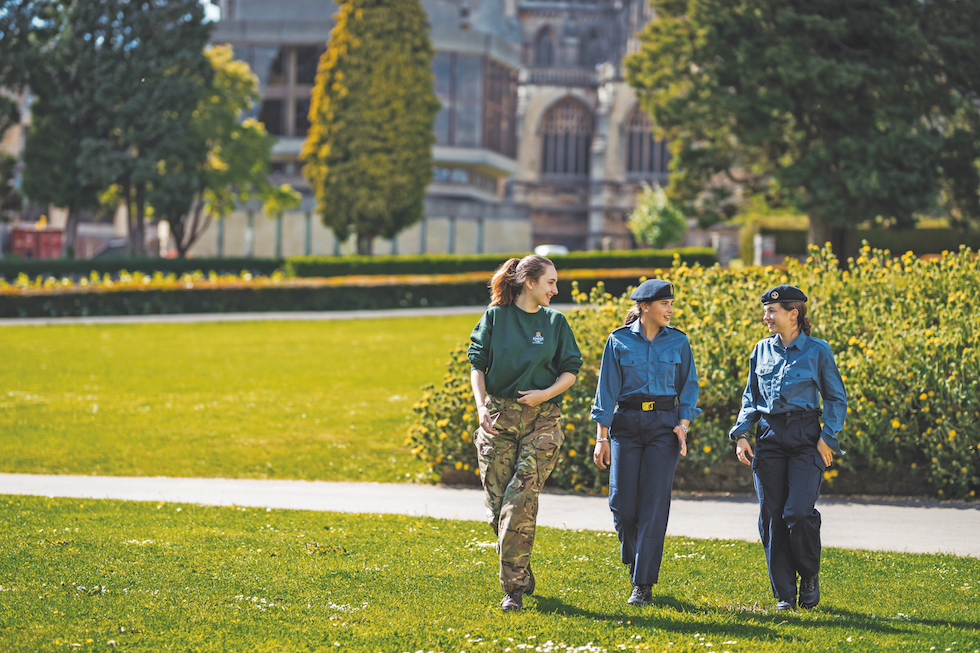
For other schools, whose origins are not military, the Combined Cadet Force (CCF) scheme is the ideal extra-curricular. Downside School in Somerset, founded by Benedictine monks in 1606, has a vibrant CCF, run by Lt Col Neill Barrett, and is one of the only schools in the country to have a CCF with its own cap badge, granted by King George VI. The army and navy CCF sections balance military activities with adventure training, Lt Col Barrett explains. ‘Drill is a means to an end – we have an inspection every year.’ CCF is not a recruiting agency for the armed forces, he says, but ‘about developing the individual and their leadership skills.’ For those who choose the military as a career, it can be useful, however. ‘CCF gives you a broad idea of what’s available in the Armed Forces,’ says RHS old boy, Captain Piers Flay of the Household Cavalry. ‘It’s by no means essential for wanting to join the forces – Sandhurst teaches you as if you’ve never seen the army before.’
The public school still plays a role in the modern armed forces. According to the Sutton Trust, 49 per cent of those entering Sandhurst in 2019 came from fee-paying schools, perhaps unsurprisingly. ‘The dynamics of boarding school life, in particular, help build the essential foundations for a successful military career,’ says Midshipman Andrew Pullicino, former head boy at Downside School and recently commissioned into the Royal Navy. ‘Besides the obvious benefits that a Combined Cadet Force offers aspiring officers, the setup of a boarding school enables individuals to learn to live with one another in close proximity, forging strong bonds and maintaining a strong focus on professionalism and high personal standards. This is especially true in the prefectural structure, a system that characterises British public schools. By testing and adapting leadership and management skills in those formative years, this system encourages individuals to take responsibility for their juniors and their peers.’
Though former special forces officer Colonel David Smiley – the possible inspiration for John le Carré’s George Smiley – is on the list of Old Pangbournians, scarcely any take this opportunity today – ‘one or two a year, if that,’ says Walne. As for military families? ‘We’d love some more.’
This article was originally published in the Autumn/Winter 2020 issue of School House Magazine



